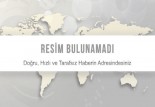User Permissions and Two Factor Authentication

A solid security infrastructure is based on the user’s permissions and two-factor authentication. They can reduce the risk of malicious or accidental click to find out more insider threats, limit the impact of data breaches, and also ensure compliance with regulations.
Two-factor authentication (2FA) requires users to enter credentials from two different categories to sign into an account. It could be something the user is familiar with (passwords PIN codes, passwords security questions) or something they’ve got (one-time verification code that is sent to their phone or an authenticator app) or something they ARE (fingerprints or a face scan, or retinal scan).
Most often, 2FA is a subset of Multi-Factor Authentication (MFA) that has numerous more components than just two. MFA is a requirement for certain industries such as healthcare, ecommerce, and banking (due to HIPAA regulations). The COVID-19 pandemic has also created a new urgency for businesses that require two-factor authentication for remote workers.
Enterprises are living organisms and their security infrastructures are constantly changing. New access points are introduced every day, users switch roles, hardware capabilities evolve and complex systems end up in the hands of users every day. It is important to regularly reevaluate the two-factor authentication strategies regularly to ensure they keep up with the latest developments. Adaptive authentication is one method to achieve this. It is a form of contextual authentication, which activates policies based on timing, location and the manner in which the login request is handled. Duo provides an administrator dashboard that allows you to easily monitor and set these types of policies.
Benzer Haberler
























